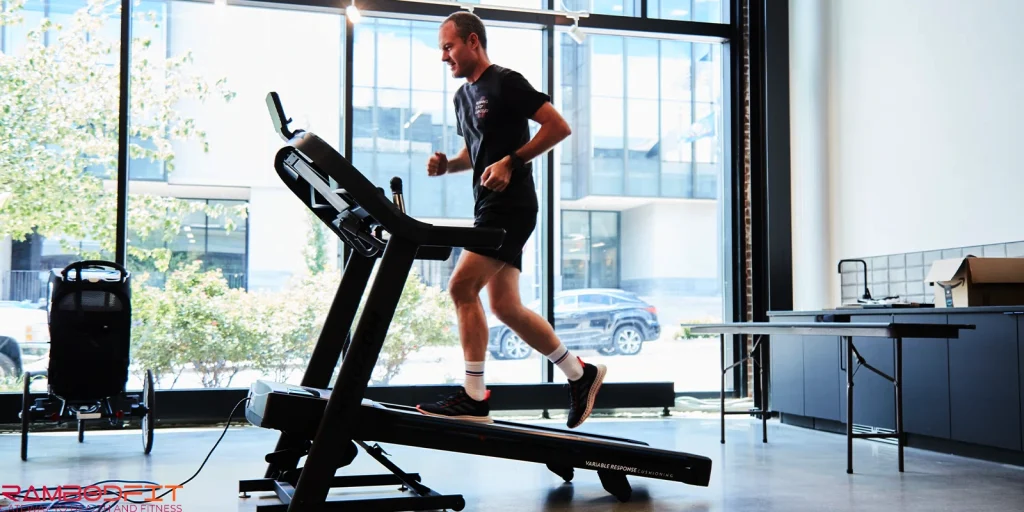


Most people naturally believe that running burns significantly more calories than walking. After all, running appears to be more demanding, it feels like a challenge, and from a young age, we’re taught that pushing yourself to go faster is the surest way to build strength and shed fat. It’s easy to look at someone sprinting down the street and assume they’re getting fitter by the minute, while a walker seems to be taking the easy way out.
But if you take a closer look at the science behind these activities, especially when comparing Incline Walking vs Running, the picture gets a lot more nuanced. Recent studies have started to question the old assumption that running is always better than walking when it comes to burning fat and improving overall health.
For one thing, while running does burn more calories per minute than walking, it isn’t always the most sustainable option—especially for people dealing with joint pain, injuries, or those just starting their fitness journey. I can relate to this firsthand. Over the years, I’ve alternated between brisk incline walks and easy jogs on the treadmill, exploring the balance of Incline Walking vs Running.
Sometimes my knees would protest after a run, forcing me to slow down and opt for walking instead. Other times, I simply didn’t have the motivation for a full-on jog, so I’d choose a vigorous walk. What’s interesting is that the differences in my results weren’t always as dramatic as I expected. In fact, there were times when consistent, challenging walks led to just as much progress as my running phases.
Moreover, walking—especially at a steep incline or at a fast pace—can be surprisingly effective for calorie burn and fat loss. When considering Incline Walking vs Running, walking is also less taxing on your body, which means you can often go for longer or more frequent sessions, ultimately adding up to more total calories burned over time. Plus, walking is more accessible and sustainable for most people. You’re less likely to skip a workout due to soreness, burnout, or injury, and you can fit walking into your daily routine more easily than a high-intensity run.
The research also highlights another important factor: intensity matters, but so does consistency. While running might torch a higher number of calories in a short burst, walking allows for longer durations and more consistency over weeks and months, which plays a major role in the discussion of Incline Walking vs Running and is crucial for long-term fat loss and overall health. Some studies even suggest that people who walk regularly tend to stick with their routines longer and experience fewer setbacks due to overuse injuries.
So, the idea that running always trumps walking for fat loss and fitness isn’t as clear-cut as we once thought. When you look at Incline Walking vs Running, it really comes down to what fits your body, your lifestyle, and your preferences. Both activities have their place, and both can deliver impressive results when approached thoughtfully. Let’s dive deeper into how you can make either walking or running work for you, depending on your individual needs and goals.
Rambodfit elaborates.
Table of Contents

A recent study took a close look at this and found something interesting: when comparing Incline Walking vs Running, walking uphill can actually burn more fat than running. It makes sense when you think about it.
When you walk on a steep incline, your big muscle groups—like your glutes and calves—kick into high gear. Even your heart works harder. In the context of Incline Walking vs Running, those muscles eat up more oxygen and energy, so your body has to tap into fat stores to keep up.
The research uncovered two major factors explaining why incline walking is more effective for fat burning than running. In the broader discussion of Incline Walking vs Running, the first major factor is muscle engagement. When you walk uphill, your primary muscle groups—the glutes, hamstrings, and calves—are forced to engage much more intensely than they do on flat ground or even during a typical run. This extra effort is noticeable almost instantly; as soon as you start climbing at a steep incline, you can feel those muscles working harder.
The heart rate climbs but tends to stabilize at a level that keeps you within the aerobic zone, which is the optimal state for fat metabolism. This isn’t just theory—I’ve felt the difference myself. A mere 15 minutes on a treadmill set to a challenging 12% incline leaves my glutes burning in a way that’s surprisingly more intense than what I experience during my usual squat warm-ups. There’s a deep, satisfying fatigue that comes from sustained muscular engagement rather than short bursts of effort.
The second reason is all about consistency and efficiency, which plays a huge role in understanding Incline Walking vs Running. Incline walking naturally enforces a steady, manageable pace, allowing your body to remain in the aerobic state without the disruptive spikes that come from running. When you run, your body is often forced to alternate between aerobic and anaerobic zones, especially if your pace varies or you push yourself into sprints.
This back-and-forth means your body has to reach for quick sources of energy, like stored glucose, rather than relying on fat reserves. In contrast, walking briskly uphill keeps your metabolism in a smooth, continuous groove. Your system doesn’t scramble for quick sugar fixes; instead, it can settle into burning fat as the primary fuel source.
One particularly striking insight from the study is how your body’s fuel preferences shift when you maintain a consistent incline and pace. This ties directly into the comparison of Incline Walking vs Running, as the research suggests that under these steady-state conditions, the body’s metabolic pathways actually favor fat oxidation.
Fat cells are mobilized and converted into usable energy rather than being stored for later. This process is not only efficient but also sustainable over longer periods, making incline walking an excellent choice for those looking to improve body composition.
I can personally attest to these findings—there have been days when just a moderate 20-minute incline walk has left me drenched in sweat, my muscles fatigued, and my body noticeably worked, far more than after a quick 2-kilometer jog. It’s a revelation to realize that such a simple change in your walking routine can have such a profound impact on fat burning and overall fitness. This deeper understanding sheds light on why so many trainers and fitness experts recommend incline walking as a powerful tool for anyone aiming to lose fat and build endurance without the joint stress or injury risk that sometimes comes with high-impact running.

Running and incline walking are both great ways to get your heart pumping, but when you look at Incline Walking vs Running, it becomes clear that they really do their best work in different situations.
Incline walking? That’s your go-to if you want to burn more fat, take it easy on your joints, and build up your lower-body muscles. In the context of Incline Walking vs Running, it keeps your energy steady, which makes it easier to stick with for the long haul. Plus, it just feels more comfortable for most people.
Running, on the other hand, torches more calories in less time. When comparing Incline Walking vs Running, running is perfect if you want to boost your cardiovascular speed and endurance. The tradeoff is that it’s tougher on your joints and tissues, so it fits best with intense training plans.
So, if you’re aiming to lose fat but want to be kind to your joints, Incline Walking vs Running clearly shows that incline walking gives you the advantage. But if burning calories fast and building conditioning is what you’re after, running is still a top pick.

Let’s be real—incline walking isn’t just some watered-down version of running. When you look at Incline Walking vs Running, science backs it up: it’s a solid way to boost your metabolism. If you want to burn more fat, work your legs harder, and go easy on your joints, incline walking comes through big time.
Running’s still great, especially if you’re chasing overall fitness or want to torch calories fast. But when comparing Incline Walking vs Running, the old idea that running always wins for fat loss just doesn’t hold up.
Doesn’t matter if you’re a serious athlete, someone who hits the gym on weekends, or you just want to lose fat and keep it off—Incline Walking vs Running makes it clear that incline walking absolutely earns a spot in your routine.
Not necessarily. Both have unique benefits. Incline walking is phenomenal for fat burning and joint-friendly training, while running helps with speed, VO₂max, and overall calorie output. Many trainers (and I personally agree) recommend mixing both across the week.
Most research points to 8–15% incline as the optimal range for increased muscle activation and fat oxidation. From personal experience, 12% feels like the perfect “middle ground”—challenging, but not overwhelming.
Running isn’t inherently bad, but high frequency or bad technique can increase impact stress. If you have knee or ankle sensitivity, incline walking can deliver similar or superior metabolic benefits with far less joint strain.